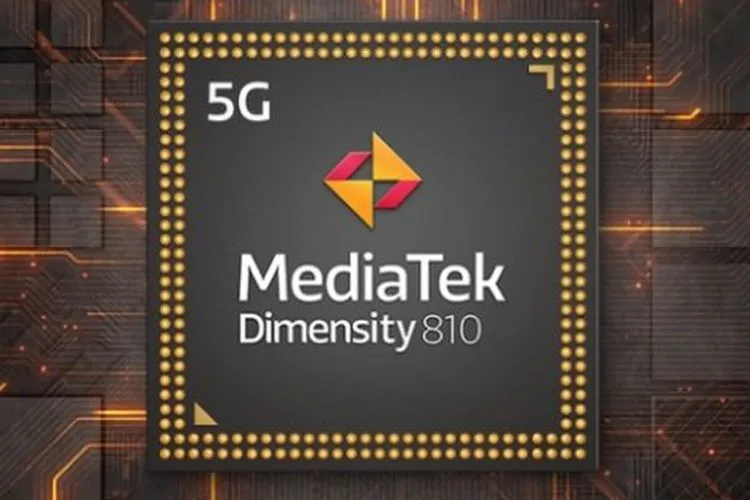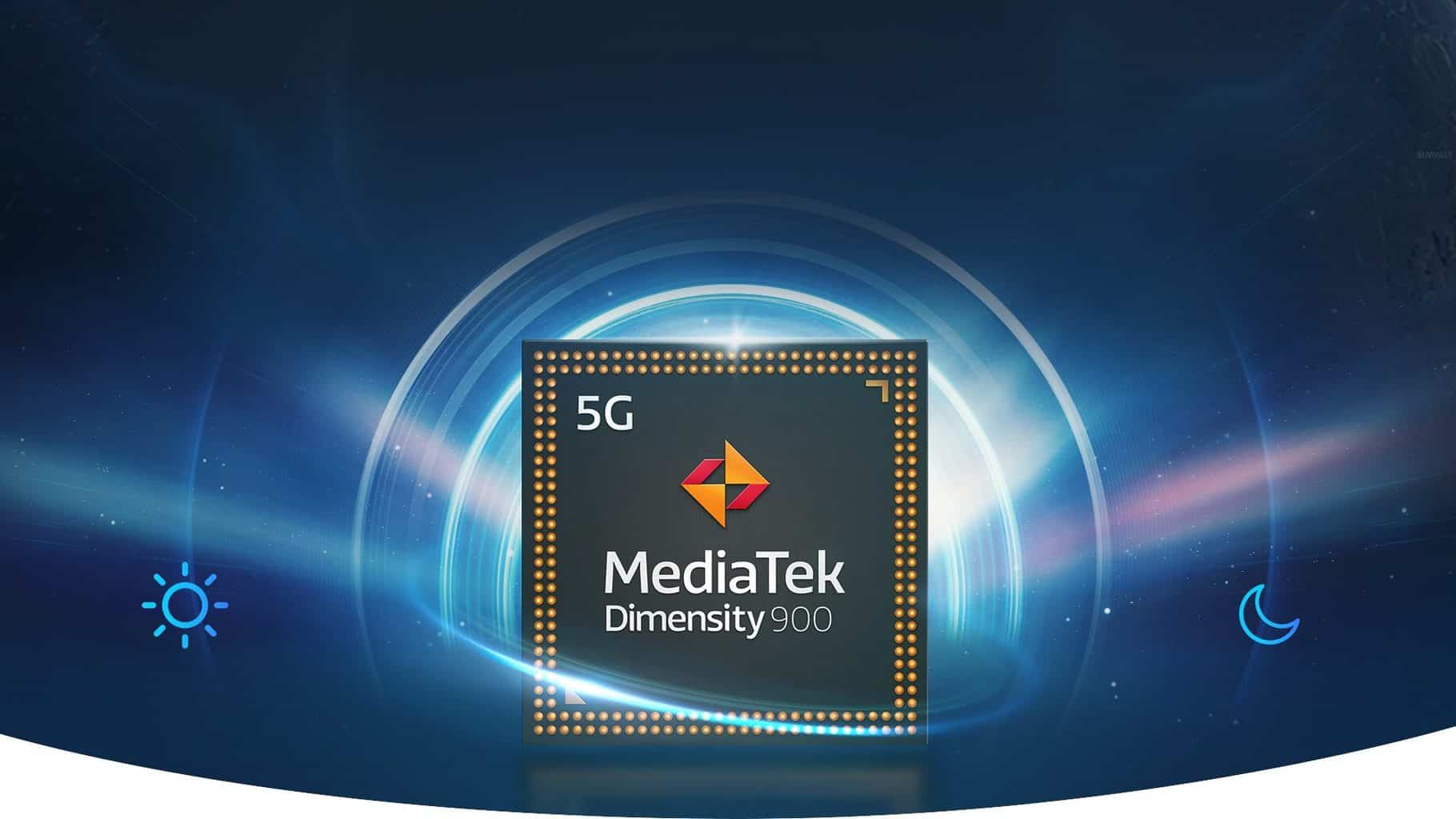5 Chipsets Similar to the Snapdragon 695 5G
Qualcomm introduced the Snapdragon 695 5G chipset in October 2021, which was designed specifically for mid-range smartphones with 5G connectivity.
The integrated X51 5G modem supports both mmWave and Sub-6 5G networks. However, 5G support is not the only impressive feature of this system on a chip (SoC); its CPU architecture also stands out.
The Snapdragon 695 comprises eight CPU cores organized into two clusters. The performance cluster contains two Kryo 660 Gold cores based on the Cortex A78 architecture (2.2 GHz), while the efficiency cluster is powered by six Kryo 660 Silver cores featuring the native Cortex A55 microarchitecture (2.0 GHz).
The presence of the Cortex A78 architecture in this 6 nm chipset is a bit surprising, considering that it was first introduced in 2020 with the flagship Snapdragon 888 chipset. This feature made the Snapdragon 695 tbecome he fastest SoC in the Snapdragon 600 Series at the time of its release, rivaling the performance of some Snapdragon 700 Series SoCs.
Therefore, some argue that the Snapdragon 695 should have been included in the Snapdragon 700 Series, which targets the upper-middle-class market.
In addition, the Snapdragon 695 is equipped with an Adreno 619 GPU, which boasts a 30% improvement in graphics performance over the Adreno 618. The SoC also includes three Spectra 346T image signal processors, enabling smartphone cameras with resolutions of up to 108 megapixels.
Other notable highlights include support for Full HD+ screen resolutions with refresh rates of up to 120 Hz, video recording resolutions of up to 1080p at 60 fps, eMMC 5.1 or UFS 2.2 internal memory types, and Quick Charge 4+ charging technology with a maximum power output of 100W.
The Snapdragon 695 achieved an AnTuTu 9 score of approximately 404,403, as well as single-core and multi-core GeekBench 5 scores of 681 and 1989, respectively. In addition, its graphics capability received a score of 1182 on 3DMark Wild Life.
The nanoreview website ranked the Snapdragon 695 as the 43rd best chipset as of March 2022. This SoC is featured in the Realme 9 Pro, OPPO Reno7 Z 5G, Redmi Note 11 Pro 5G, and POCO X4 Pro 5G, among other smartphones.
You may be curious about comparable chipsets to the Snapdragon 695. The Carisinyal team has compiled a list of five chipsets that offer comparable performance within the same price range. The following five chipsets can be considered competitors to the Qualcomm Snapdragon 695.
1. MediaTek Dimensity 810

The MediaTek Dimensity 810 includes eight CPU cores, including two 2.0 GHz Cortex A76 cores and six 2.0 GHz Cortex A55 cores. This SoC, fabricated using a 6 nm process, also integrates essential components such as the Mali-G57 MC2 GPU, APU, ISP, and a 5G modem.
The Dimensity 810 supports Full HD+ displays with up to 120 Hz refresh rates and is compatible with 64 MP resolution cameras. Furthermore, it is compatible with LPDDR4X RAM and UFS 2.1 internal memory.
While MediaTek has not provided specific details regarding the Dimensity 810's video recording capabilities, the POCO M4 Pro 5G, a smartphone that utilizes this SoC, can record videos at 1080p resolution with frame rates of 30 and 60 fps.
According to nanoreview data, the Dimensity 810 earned an AnTuTu score of 372,551 points. The single-core and multi-core scores for GeekBench 5 were 621 and 1889, respectively. In addition, its graphics processing unit (GPU) earned a score of 1230 on the 3D Mark Wild Life application.
Here's a comparison between the MediaTek Dimensity 810 and the Snapdragon 695:
Pros of the Dimensity 810 over the Snapdragon 695
- Higher performance core clock speed (2.4 GHz vs. 2.2 GHz)
- Higher graphics capability score (1230 vs. 1182 on 3DMark Wild Life)
Cons of the Dimensity 810 compared to the Snapdragon 695
- Older CPU microarchitecture (Cortex A76 vs. Cortex A78)
- Lower single-core and multi-core scores (621 vs. 681 and 1182 vs. 1989)
- Power efficiency may be inferior
- Less optimization support from game developers
2. HiSilicon Kirin 810

The HiSilicon Kirin 810 includes two clusters of CPUs. The first cluster consists of two performance-oriented Cortex A76 cores operating at 2.27 GHz, while the second cluster contains Cortex A55 efficiency-oriented cores operating at 1.88 GHz.
This 7 nm SoC also incorporates a Mali-G52 MP6 GPU (850 GHz), Kirin ISP 4.0 with support for up to 48 MP cameras, an integrated 4G modem, and an NPU (AI controller) based on Huawei's Da Vinci architecture.
The Kirin 810 supports Full HD resolution displays with a 60 Hz refresh rate and can process videos recorded at 4K resolution at 30 fps. It is compatible with UFS 2.1-type internal memory and LPDDR4X RAM. The Huawei Nova 5T is an example of a smartphone equipped with the Kirin 810.
According to nanoreview data, the Kirin 810 achieved an AnTuTu 9 score of 367,396. Its single-core and multi-core scores on the GeekBench 5 application were 596 and 1915, respectively. The Kirin 810's graphics performance score (GPU) on 3D Mark Wild Life was 1420.
Here is a comparison between the Kirin 810 and Snapdragon 695:
Pros of the Kirin 810 over the Snapdragon 695
- Higher graphics performance score (1420 vs. 1182)
- Better RAM management due to increased bandwidth
Cons of the Kirin 810 compared to the Snapdragon 695
- Less advanced fabrication process (7 nm vs. 6 nm)
- Older CPU microarchitectures (Cortex A76 vs. Cortex A78)
- Lower AnTuTu, single-core, and multi-core scores (367,396 vs. 404,403; 596 vs. 681; 1915 vs. 1989)
- Less optimization support from game developers
- No 5G connectivity support
3. Qualcomm Snapdragon 765G

The first Snapdragon 700 Series SoC to support 5G connectivity is the Qualcomm Snapdragon 765G. This SoC contains three clusters of CPUs. The first cluster consists of a single Kryo 475 Prime (2.4 GHz) performance core.
The second cluster consists of a single Kryo 475 Gold (2.2 GHz) intermediate core. Lastly, the third cluster includes six Kryo 475 Silver (1.8 GHz) efficiency cores. Kryo 475 Prime and Kryo 475 Gold are based on the Cortex A76 microarchitecture, while Kryo 475 Silver is based on the Cortex A55.
The Snapdragon 765G also includes an Adreno 620 GPU (750 MHz), a Spectra 355 ISP that supports cameras with resolutions up to 192 MP, an X52 internal 5G modem, and an AI controller (Hexagon 696 DSP). In addition, the SoC supports LPDDR4X RAM and UFS 2.1 internal memory.
The Snapdragon 765G supports video recording at up to 4K resolution, WiFi 6, and can connect to screens with up to 4K resolution. The OPPO Reno5 5G is an example of a smartphone that utilizes this SoC.
According to nanoreview data, the Snapdragon 765G recorded an AnTuTu 9 score of 376,546. Its single-core and multi-core scores on GeekBench 5 were 589 and 1784, respectively. Furthermore, the SoC's graphics capability (GPU) score reached 1686 on 3DMark Wild Life.
Here's a comparison between the Snapdragon 765G and the Snapdragon 695:
Pros of the Snapdragon 765G over the Snapdragon 695
- Higher CPU clock speed (2.4 GHz vs. 2.2 GHz)
- More capable GPU
- Slightly higher graphics capability score (1686 vs. 1182)
- Superior photography and videography capabilities
Cons of the Snapdragon 765G compared to the Snapdragon 695
- Older CPU microarchitecture technology (Cortex A76 vs. Cortex A78)
- Less advanced fabrication process (7 nm vs. 6 nm)
- Lower AnTuTu 9, single-core, and multi-core scores (376,546 vs. 404,403; 589 vs. 681; 1784 vs. 1989)
4. MediaTek Dimensity 900

The MediaTek Dimensity 900 is an eight-core System-on-Chip manufactured with a 6 nm fabrication process. These cores consist of two 2.4 GHz Cortex A78 performance cores and six 2.0 GHz Cortex A55 efficiency cores.
This SoC is equipped with a 900 MHz Mali-G68 MC4 GPU and an integrated 5G modem. It is known that the Image Signal Processor (ISP) utilized by the Dimensity 900 supports cameras with resolutions of up to 108 MP and video recording at up to 4K resolution at 30 frames per second.
The Dimensity 900 is compatible with Full HD (2520 x 1080) displays and offers up to 120 Hz refresh rates. It supports LPDDR4x and LPDDR5 RAM, along with UFS 2.1 and UFS 3.1 standards for internal memory. Additionally, the SoC supports WiFi 6 and the playback of HDR10+ content.
The Dimensity 900 incorporates MediaTek's HyperEngine 3.0 technology, which is designed to reduce network latency, thereby reducing lag caused by poor connections during gameplay. The OPPO Reno6 5G is a smartphone that utilizes the Dimensity 900.
According to data from nanoreview, the Dimensity 900 achieved an AnTuTu 9 score of 419,352. Its single-core and multi-core scores on GeekBench 5 were 702 and 2140. The SoC's graphics capability (GPU) scored 2019 on 3DMark Wild Life.
Here's a comparison between the Dimensity 900 and the Snapdragon 695:
Pros of the Dimensity 900 over the Snapdragon 695
- Higher CPU clock speed (2.4 GHz vs. 2.2 GHz)
- Higher AnTuTu score (419,352 vs. 404,403)
- Higher single-core and multi-core scores (702 vs. 681; 2140 vs. 1989)
- Higher graphics capability score (2019 vs. 1182)
- Better RAM management with increased bandwidth
- Superior photography and videography capabilities
Cons of the Dimensity 900 compared to the Snapdragon 695
- Lower optimization by game developers
- Less power consumption efficiency
5. Apple A11 Bionic

The Apple A11 Bionic is a chip manufactured using a 10 nm process by Taiwan Semiconductor Manufacturing Company (TSMC). The A11 Bionic houses six CPU cores, comprising two Monsoon performance cores (2.39 GHz) and four Mistral efficiency cores (1.19 GHz).
This SoC is Apple's first to feature an in-house GPU, a change from previous generations' reliance on PowerVR GPUs. The A11 Bionic employs an Apple GPU with three cores and a maximum frequency of 1.06 GHz.
The Apple A11 Bionic also includes various other components, such as an Image Signal Processor (ISP), a neural engine (AI processor), and a 4G internal modem. The ISP in this SoC is capable of recording video up to 4K resolution at 24, 30, or 60 fps.
Apple claims that the A11 Bionic's ISP has improved autofocus speed in low-light conditions, noise reduction, and detail enhancement. The SoC is compatible with LPDDR4X RAM and NVMe internal memory.
Three smartphones utilize the Apple A11 Bionic: the iPhone 8, iPhone 8 Plus, and iPhone X. According to Nanoreview data, the A11 Bionic scored 380,058 on AnTuTu 9. The SoC's single-core and multi-core scored 917 and 2328 on GeekBench 5. The SoC's graphics capability score in the 3D Mark Wild Life test was 3216.
It is important to note that comparing the Apple A11 Bionic to the Snapdragon 695 is not entirely appropriate, as the two SoCs run on different operating systems. The comparison is for informational purposes only and should not be used to determine which SoC is superior.
Here's a comparison between the Apple A11 Bionic and the Snapdragon 695:
Pros of the Apple A11 Bionic over the Snapdragon 695
- Higher CPU clock speed (2.39 GHz vs. 2.2 GHz)
- Higher single-core, multi-core, and graphics capability scores (917 vs. 681; 2328 vs. 1989; 3216 vs. 1182)
- Superior photography and videography capabilities
Cons of the Apple A11 Bionic compared to the Snapdragon 695
- Lacks support for 5G connectivity
- Less advanced fabrication process (10 nm vs. 6 nm)
- Lower power consumption efficiency
- Less efficient RAM management due to smaller bandwidth
- Slightly lower AnTuTu score (380,058 vs. 404,403)
In conclusion, the capabilities of these five chipsets are comparable to those of the Snapdragon 695. Each chip has its own advantages and disadvantages, depending on its intended use.
However, it is important to understand that a phone's performance is not determined solely by its chipset. The performance of a phone is affected by a variety of factors, including RAM and the software it employs.
Which chip do you believe is the most powerful rival to the Snapdragon 695? Please share your thoughts in the comments section.
